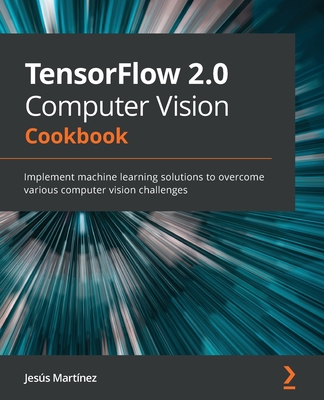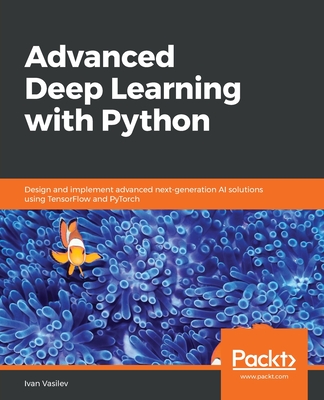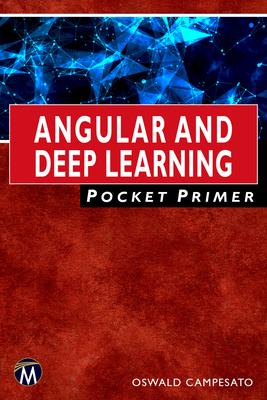Hands-On Computer Vision with Tensorflow 2
暫譯: 實戰電腦視覺與 TensorFlow 2
Planche, Benjamin, Andres, Eliot
- 出版商: Packt Publishing
- 出版日期: 2019-05-30
- 定價: $1,395
- 售價: 9.5 折 $1,325
- 語言: 英文
- 頁數: 372
- 裝訂: Quality Paper - also called trade paper
- ISBN: 1788830644
- ISBN-13: 9781788830645
-
相關分類:
DeepLearning、TensorFlow、Computer Vision
-
相關翻譯:
計算機視覺實戰:基於TensorFlow 2 (簡中版)
立即出貨 (庫存=1)
買這商品的人也買了...
-
 電路板電氣測試與AOI檢驗技術簡介
電路板電氣測試與AOI檢驗技術簡介$1,500$1,425 -
 $281程序員修煉之道 :從小工到專家 (The Pragmatic Programmer: From Journeyman to Master)
$281程序員修煉之道 :從小工到專家 (The Pragmatic Programmer: From Journeyman to Master) -
 自動化光學檢測
自動化光學檢測$520$494 -
 鳥哥的 Linux 私房菜-基礎學習篇, 4/e
鳥哥的 Linux 私房菜-基礎學習篇, 4/e$980$774 -
 程序員的數學3 : 線性代數
程序員的數學3 : 線性代數$474$450 -
 Computer Vision for Visual Effects
Computer Vision for Visual Effects$2,670$2,537 -
 超圖解 Arduino 互動設計入門, 3/e
超圖解 Arduino 互動設計入門, 3/e$680$578 -
 $2,538Deep Learning for Medical Image Analysis
$2,538Deep Learning for Medical Image Analysis -
 Visual Basic 2017 基礎必修課 (適用VB 2017/2015)
Visual Basic 2017 基礎必修課 (適用VB 2017/2015)$530$451 -
 演算法圖鑑:26種演算法 + 7種資料結構,人工智慧、數據分析、邏輯思考的原理和應用 step by step 全圖解
演算法圖鑑:26種演算法 + 7種資料結構,人工智慧、數據分析、邏輯思考的原理和應用 step by step 全圖解$450$356 -
 MIS 一定要懂的 82個網路技術知識
MIS 一定要懂的 82個網路技術知識$360$284 -
 程序員的數學
程序員的數學$294$279 -
 提升程式設計師的面試力|189道面試題目與解答, 6/e (Cracking the Coding Interview : 189 Programming Questions and Solutions, 6/e)
提升程式設計師的面試力|189道面試題目與解答, 6/e (Cracking the Coding Interview : 189 Programming Questions and Solutions, 6/e)$880$695 -
 $969Hands-On Convolutional Neural Networks with TensorFlow: Solve computer vision problems with modeling in TensorFlow and Python.
$969Hands-On Convolutional Neural Networks with TensorFlow: Solve computer vision problems with modeling in TensorFlow and Python. -
 學好跨平台網頁設計 -- HTML5、CSS3、JavaScript、jQuery 與 Bootstrap 4 超完美特訓班, 2/e
學好跨平台網頁設計 -- HTML5、CSS3、JavaScript、jQuery 與 Bootstrap 4 超完美特訓班, 2/e$480$379 -
 Big Data Analysis with Python (Paperback)
Big Data Analysis with Python (Paperback)$1,450$1,378 -
 $969Tensorflow 2.0 Quick Start Guide
$969Tensorflow 2.0 Quick Start Guide -
 Qt 5 and OpenCV 4 Computer Vision Projects (Paperback)
Qt 5 and OpenCV 4 Computer Vision Projects (Paperback)$1,830$1,739 -
 輕鬆學會 LINE 程式設計與 AI 聊天機器人實作開發
輕鬆學會 LINE 程式設計與 AI 聊天機器人實作開發$520$406 -
 Python 與 LINE Bot 機器人全面實戰特訓班 (附203分鐘影音教學/範例程式)
Python 與 LINE Bot 機器人全面實戰特訓班 (附203分鐘影音教學/範例程式)$520$411 -
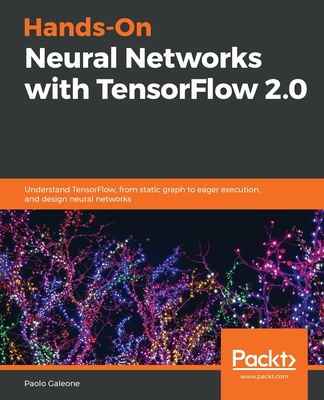 Hands-On Neural Networks with TensorFlow 2.0
Hands-On Neural Networks with TensorFlow 2.0$1,830$1,739 -
 SLAM 視覺十四講:雙倍內容強化版
SLAM 視覺十四講:雙倍內容強化版$690$545 -
 $1,464Deep Learning with TensorFlow 2 and Keras, 2/e (Paperback)
$1,464Deep Learning with TensorFlow 2 and Keras, 2/e (Paperback) -
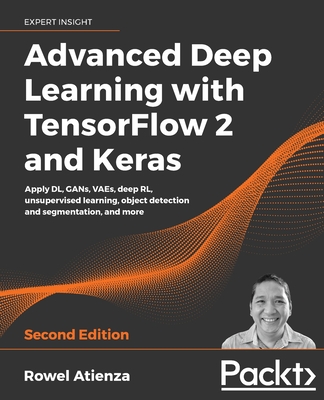 $1,425Advanced Deep Learning with TensorFlow 2 and Keras - Second Edition
$1,425Advanced Deep Learning with TensorFlow 2 and Keras - Second Edition -
 Towards Tensorflow 2.0:無痛打造AI模型(iT邦幫忙鐵人賽系列書)
Towards Tensorflow 2.0:無痛打造AI模型(iT邦幫忙鐵人賽系列書)$500$330
相關主題
商品描述
Computer vision solutions are becoming increasingly common, making their way into fields such as health, automobile, social media, and robotics. This book will help you explore TensorFlow 2, the brand new version of Google's open source framework for machine learning. You will understand how to benefit from using convolutional neural networks (CNNs) for visual tasks.
Hands-On Computer Vision with TensorFlow 2 starts with the fundamentals of computer vision and deep learning, teaching you how to build a neural network from scratch. You will discover the features that have made TensorFlow the most widely used AI library, along with its intuitive Keras interface. You'll then move on to building, training, and deploying CNNs efficiently. Complete with concrete code examples, the book demonstrates how to classify images with modern solutions, such as Inception and ResNet, and extract specific content using You Only Look Once (YOLO), Mask R-CNN, and U-Net. You will also build generative adversarial networks (GANs) and variational autoencoders (VAEs) to create and edit images, and long short-term memory networks (LSTMs) to analyze videos. In the process, you will acquire advanced insights into transfer learning, data augmentation, domain adaptation, and mobile and web deployment, among other key concepts.
By the end of the book, you will have both the theoretical understanding and practical skills to solve advanced computer vision problems with TensorFlow 2.0.
商品描述(中文翻譯)
電腦視覺解決方案正變得越來越普遍,進入健康、汽車、社交媒體和機器人等領域。本書將幫助您探索 TensorFlow 2,這是 Google 的開源機器學習框架的全新版本。您將了解如何利用卷積神經網絡(CNN)來處理視覺任務。
《Hands-On Computer Vision with TensorFlow 2》從電腦視覺和深度學習的基本原理開始,教您如何從零開始構建神經網絡。您將發現使 TensorFlow 成為最廣泛使用的 AI 庫的特性,以及其直觀的 Keras 介面。接著,您將學習如何高效地構建、訓練和部署 CNN。這本書提供具體的代碼範例,展示如何使用現代解決方案(如 Inception 和 ResNet)對圖像進行分類,以及如何使用 You Only Look Once(YOLO)、Mask R-CNN 和 U-Net 提取特定內容。您還將構建生成對抗網絡(GAN)和變分自編碼器(VAE)來創建和編輯圖像,以及使用長短期記憶網絡(LSTM)來分析視頻。在此過程中,您將獲得有關遷移學習、數據增強、領域適應以及移動和網頁部署等關鍵概念的深入見解。
到本書結束時,您將擁有理論理解和實踐技能,以使用 TensorFlow 2.0 解決高級電腦視覺問題。



